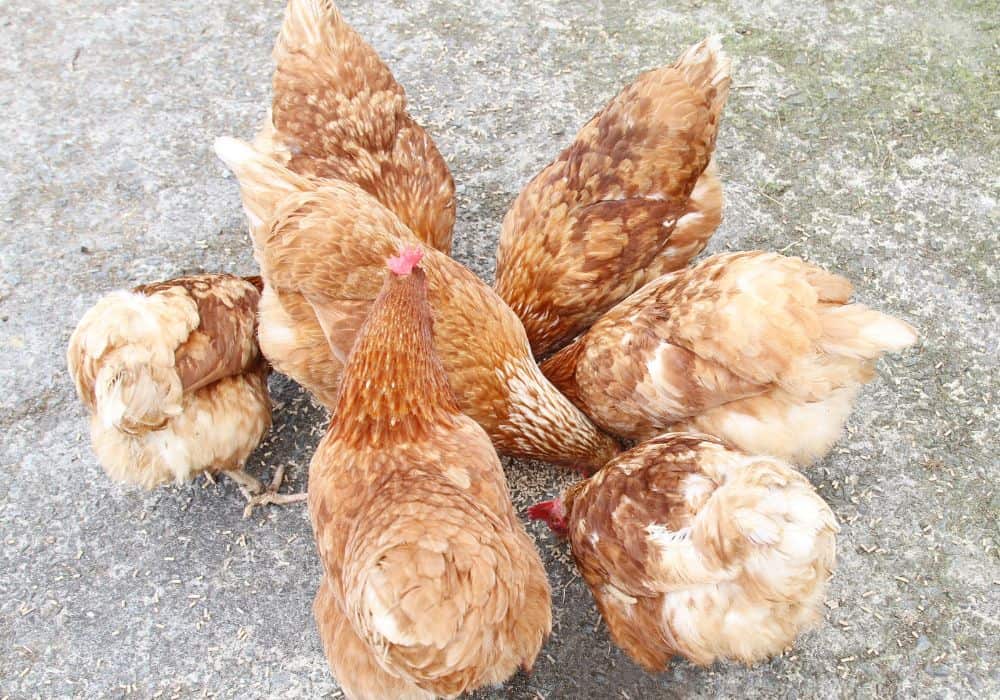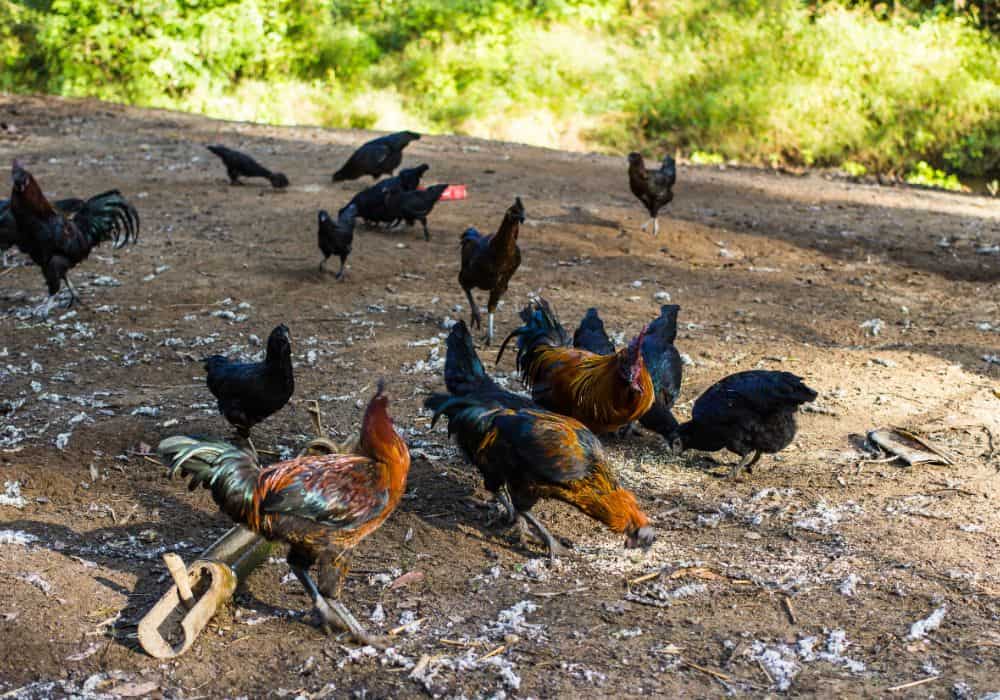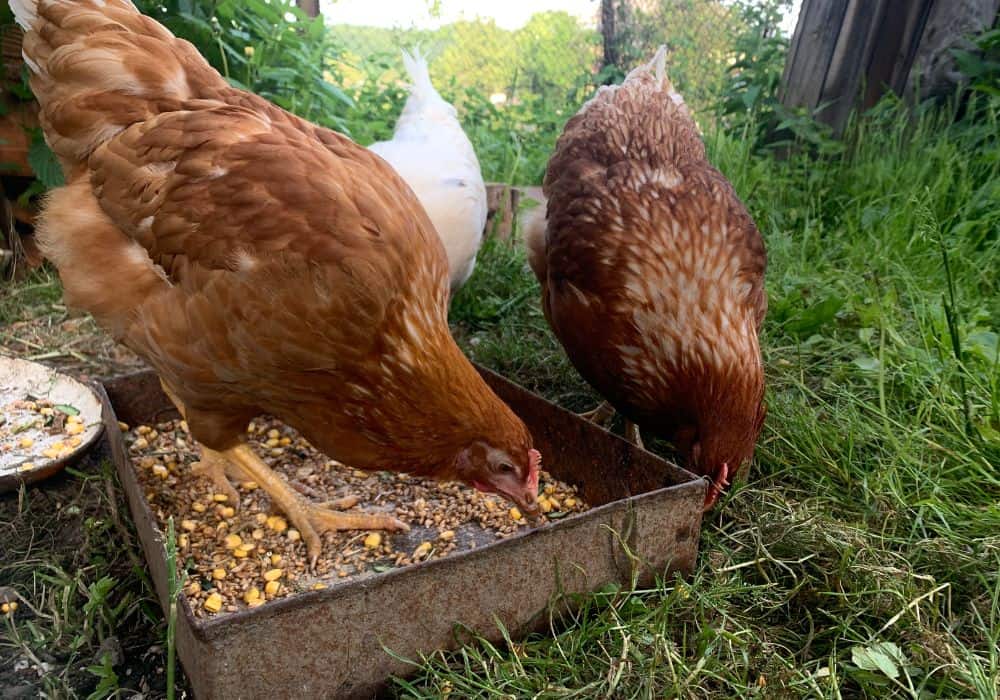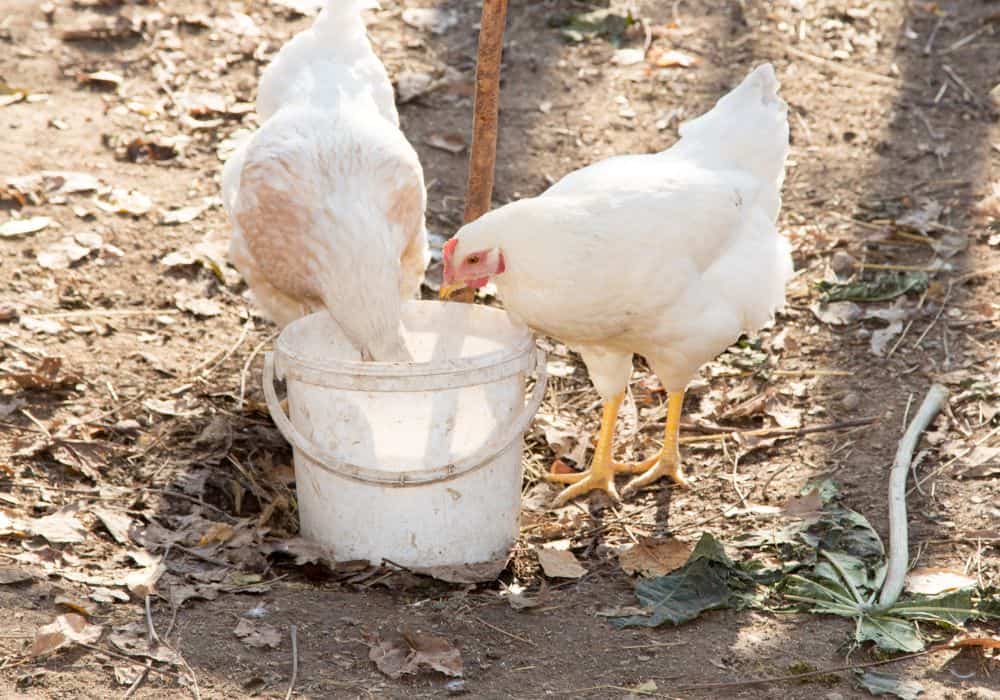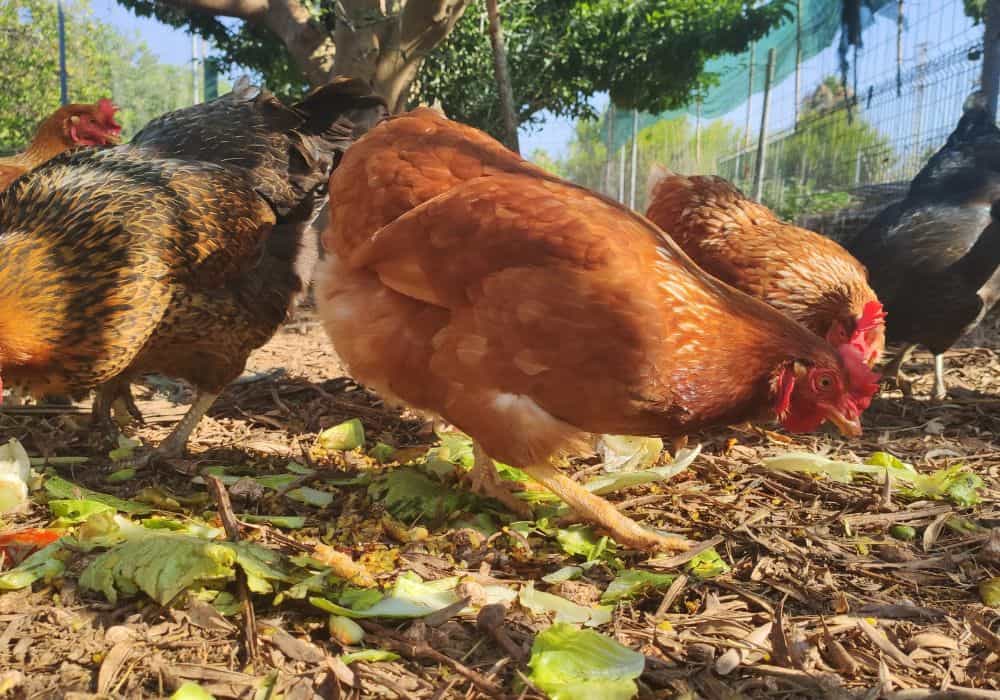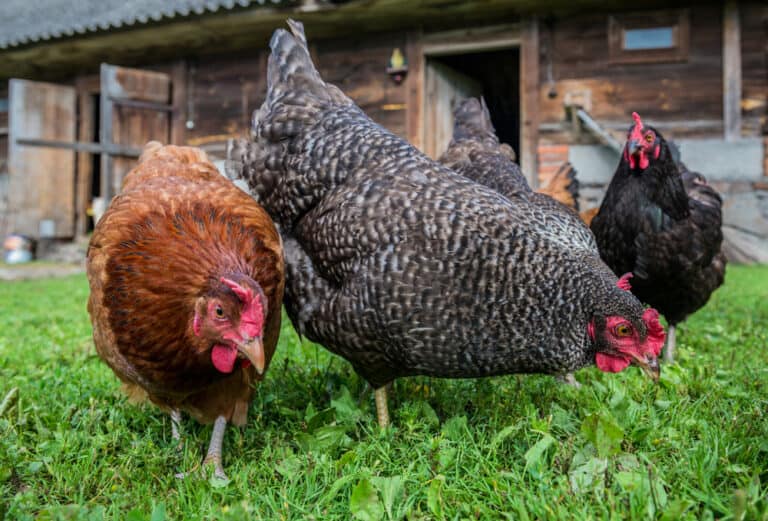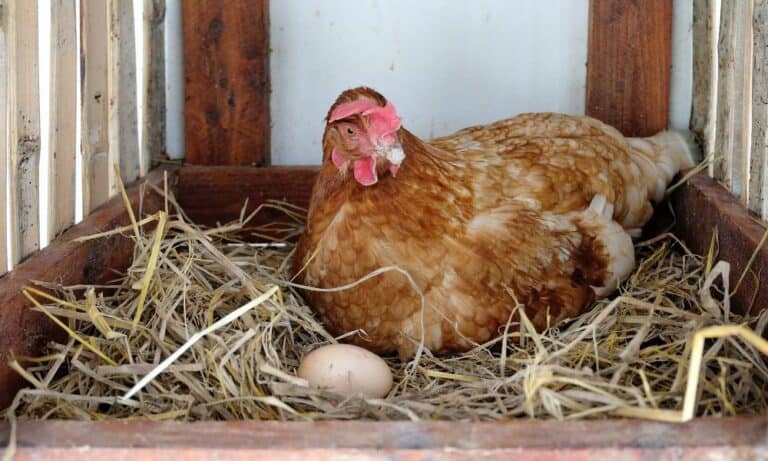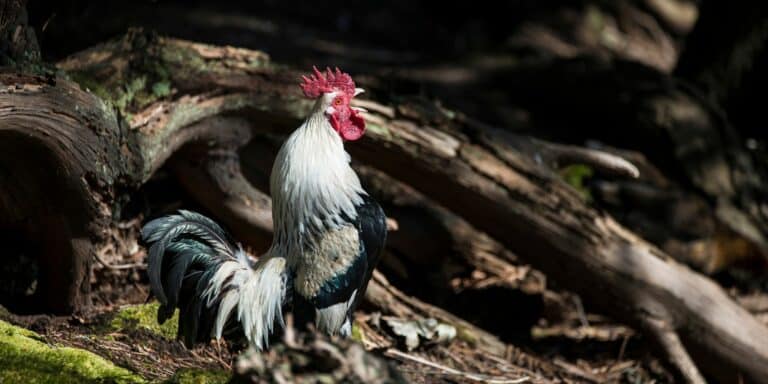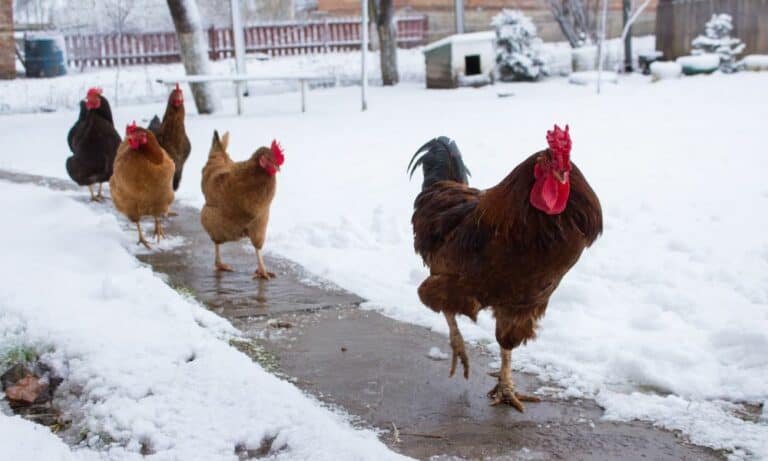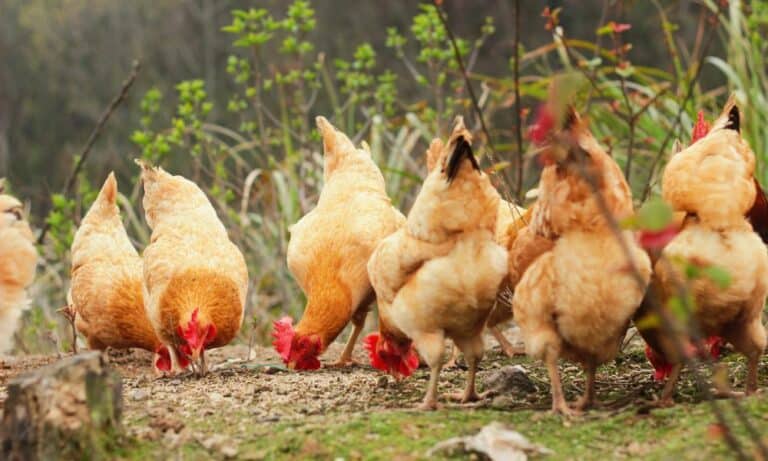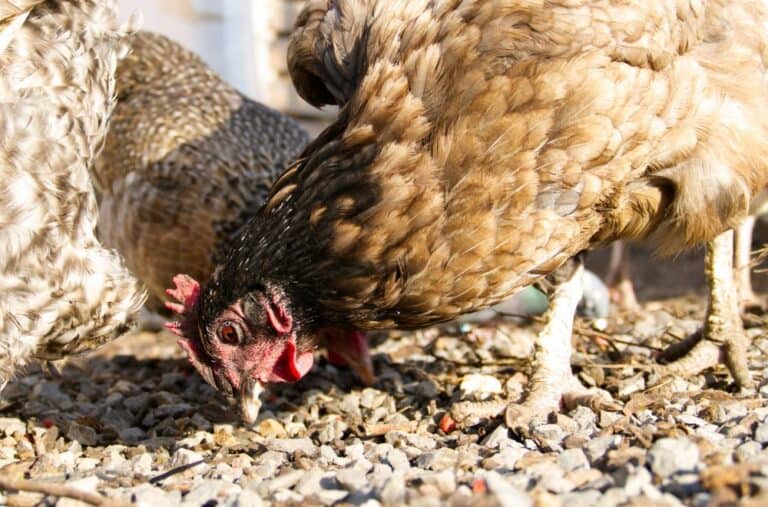Do you have backyard chickens? Are you constantly seeking ways to reduce food waste and feed your chickens a healthy diet? If so, you may be wondering if you can feed your feathered friends leftover potato peels.
After all, potato peels make up a significant portion of kitchen scraps and are often discarded without a second thought. But can chickens eat potato peels, and if so, are there any risks or benefits to consider?
As a chicken owner myself, I’ve often wondered the same thing. That’s why I’ve put together this article to help answer this question and provide you with the information you need to make an informed decision.
So, let’s dig in and find out if chickens can safely consume potato peels!
Can You Feed Chickens Potato Peels?
What chickens can and cannot eat is the subject of numerous online discussions. Potato skins are one of the most contentious scraps in the chicken-keeping community.
And with good reason – potatoes are a member of the nightshade family, and they contain toxins that can be harmful to chickens. But don’t worry; as long as you exercise some caution, you can safely give your chickens potato peels.
Just keep in mind that green potato peels usually indicate the presence of a dangerous chemical solanine. This is where you need to tread carefully as a responsible backyard flock owner.
According to Backyard Poultry Magazine, potato peels can be dangerous for chickens due to their solanine content. Wondering how to be cautious when you’re not even aware of solanine? Don’t worry; that’s where we are headed next!
What is Solanine?
Plants are impressive in their ability to shield themselves from predators, and solanine is one of their natural defense mechanisms.
ScienceDirect notes that solanine is a toxic compound found in certain vegetables, including potatoes, eggplants, and tomatoes. Solanine is mainly found in potatoes’ peels, eyes, and leaves and can be toxic to chickens if ingested in large quantities.
Understanding the risks of solanine and taking the appropriate precautions to avoid feeding your chickens potato peels that can contain this toxin is essential for every conscientious poultry owner.
Check out this YouTube video to learn more about nightshade plants and the significance of avoiding them.
Signs of Solanine Poisoning in Chickens
Your chickens can exhibit a variety of symptoms after consuming solanine. Here are some symptoms to watch out for:
- Reduced appetite
- Diarrhea
- Vomiting
- Weakness
- Seizures
- Paralysis
- Coma
It’s critical to seek veterinary attention right away if you have any reason to believe that your chickens have consumed solanine. Solanine poisoning can be deadly if ignored, and there is no known cure.
To aid the chicken’s recovery, the veterinarian may give it supportive care, such as fluids and electrolytes. In some circumstances, the chicken can even require hospitalization.
Do Potato Peels Offer Any Nutritional Value to Chickens?
Potato peels may not be a superfood for chickens, but they can still offer some nutritional value when given in moderation and alongside a diverse diet. Here are a few potential nutritional advantages of feeding your chickens potato peels:
1. Carbohydrates
Chickens may obtain sufficient amounts of carbs from potato peels to fuel their daily activity. Even though they might not be the most important food for chickens, carbohydrates can nonetheless enhance their general health and well-being.
2. Proteins
Despite not being a significant protein source, potato peels contain some of this vital nutrient. Protein is necessary for the growth and development of muscles, as well as for the maintenance of chickens’ healthy skin and feathers.
Potatoes should not, however, be relied upon as the primary supply of protein for chickens because they are not a full source of this nutrient.
3. Fiber
Potato peels not only provide a delicious and starchy snack for your chickens, but they also include a good amount of dietary fiber.
The high fiber content of potato peels can support a healthy gut in chickens and help with digestion. Potato peels can be fed to chickens in proportion to encourage regularity and prevent digestive problems.
4. Vitamins
Chickens’ immune systems and general health can benefit from the necessary vitamins included in potato peels.
Vitamin C, abundant in potato peels, is a potent antioxidant that aids in the defense of hens against harmful viruses and illnesses.
While vitamin B6 aids in protein metabolism and immunological health, vitamin K promotes blood clotting and bone health.
5. Minerals
Potato peels are also a rich source of minerals, including potassium and iron. In addition to supporting chickens’ muscles and nervous systems, potassium is an electrolyte that assists in preserving the body’s fluid balance. Iron is necessary for normal blood flow and oxygen delivery throughout the body.
6. Antioxidants
Chlorogenic acid, an antioxidant found in potato peels, can help prevent cell damage and lower the risk of certain diseases in chickens.
These potent substances can also enhance your flock’s immune system and general wellness. You may help your chickens get these essential antioxidants by feeding them potato peels.
To summarize these nutritional benefits, feeding your chickens potato peels can be a great way to provide them with a healthy and nutritious snack.
But before you start throwing potato peels into your chicken coop, you should keep a few things in mind to ensure your feathered friends stay happy and healthy. Let’s head over to the next section that covers some tips for doing it!
Tips for Feeding Potato Peels to Your Chickens
1. Cut the Peels into Small Pieces
It’s imperative to cut kitchen scraps into bite-sized pieces to eliminate the risks of choking and indigestion.
Plus, chopping the potato peels into small pieces accommodates the tiny beaks of the chickens. This will enable your chickens to ingest and digest peels easily.
2. Mix the Peels with Other Foods
Remember that while potato peels are a nutritious treat for your chickens, they shouldn’t constitute a large portion of their diet. Mix the peels with other meals like chicken feed or veggies to ensure your chickens receive a balanced diet.
3. Don’t Go Overboard
It’s vital to introduce potato peels to your chickens gradually, just like you would any new food. Start with a little dose to prevent adverse responses and observe your chickens’ behavior.
Giving your chickens too many potato peels can result in stomach problems, so make sure you provide them with a balanced diet.
4. Avoid Sprouted or Green Peels
As we’ve previously covered, solanine is primarily present in the sprouts and greenish parts of the potato peels. So, ensure that those green and sprouted parts are not fed to your chickens.
5. Cook the Peels
Although feeding your chickens potato peels raw is harmless, heating them can make them more palatable. Try cooking the peels for a couple of minutes before giving them to your chickens to increase their appeal.
Safe and Healthy Alternatives to Potato Peels
Feeding your feathered friends table scraps is not only a great way to reduce feeding costs, but it’s also a way to minimize kitchen waste. Plus, who doesn’t love treating their chickens to a little something special every now and then?
While produce from the nightshade family of vegetables, like potatoes and tomatoes, can pose a risk due to their solanine content, plenty of other options are completely safe for your chickens to munch on.
Refer to the following list to name a few safe alternatives to potato skins:
- Broccoli Stems: Although frequently disregarded in the kitchen, broccoli stems are a fantastic source of nourishment for your chickens. They’re full of nutrients and an excellent method to increase the amount of fiber in your chickens’ diet.
- Cucumber Peels: Cucumber peels are an excellent choice for your chickens if you’re searching for a hydrating snack. They contain a lot of water and are an excellent source of vitamin K.
- Spinach Stems: Even though many people prefer spinach’s leafy greens, the stems are actually a fantastic alternative for your hens. They are an incredible source of fiber and are nutrient-dense.
- Carrot Tops: Carrots are topped with leafy greens, a rich source of vitamins and minerals for your chickens. They’re a wonderful method to diversify their diet as well.
So, Can Chickens Eat Potato Peels or Not?
The bottom line is that while cooked potatoes and potato skins can be a wonderful supplement to your chicken’s diet, they shouldn’t be the only source of nourishment. Offering your chickens a wide variety of foods, just like you would for yourself, is important because variety is key.
Remember to follow these practical tips for making sure your chickens are fed potato peels safely and healthily:
- Peels should be chopped up into bite-sized pieces.
- To have a balanced diet, combine the peels with other meals.
- When you progressively introduce the peels to your chickens, see how they react.
- Never give your chickens sprouting or green peels.
- Cook the peels to make them more flavorful.
If you adhere to these instructions, you may give your chickens a wholesome, diverse diet that includes tempting treats like potato peels. Good luck!

